Server Rack VS Cabinet Introduction
In today's technology-driven environment, robust and reliable IT infrastructure is the backbone of every modern enterprise. With companies increasingly relying on data centers to store, manage, and process information, the hardware that houses critical server systems has never been more important. Among the fundamental components of these infrastructures are server racks and cabinets, two distinct solutions designed to optimize space, ensure efficient cooling, and provide secure environments for sensitive equipment. However, making the right choice between a server rack and a cabinet can be challenging for IT professionals and decision-makers. This comprehensive blog post explores the differences between these solutions from multiple perspectives, enabling you to select the optimal solution for your specific needs.
Both server racks and cabinets offer a range of benefits, yet their design philosophies, functionalities, and capabilities differ in important ways. Server racks, often used in open environments, emphasize flexibility, accessibility, and ease of installation. In contrast, cabinets tend to offer enhanced physical security, environmental control, and noise reduction, making them ideal for more demanding operational conditions. Our discussion will cover various aspects of both solutions, including their structural design and construction, airflow and thermal management, space utilization, security features, and scalability options.
This in-depth analysis is not merely a comparison of physical attributes—it digs into the processes involved in manufacturing these products, the roles of material selection and quality control, and even the after-sales support that a reliable supplier should offer. As you read on, you will discover how a manufacturer's expertise, such as that of HULK Metal, plays a pivotal role in ensuring that the equipment meets the most stringent standards of performance and reliability. HULK Metal's state-of-the-art production facilities feature advanced laser cutting, precise bending, high-quality welding, and efficient assembly lines that combine to produce server rack and cabinet solutions tailored to the unique requirements of each customer. With a comprehensive supply chain that encompasses raw material sourcing, production, quality inspection, packaging, logistics, and after-sales services, HULK Metal positions itself as a leading partner for businesses seeking dependable IT infrastructure solutions.
In the sections that follow, we will dive deep into various technical and operational facets of server racks and cabinets. Our discussion is structured to provide a holistic view from design and material technology, thermal performance, physical security, ease of maintenance, and overall cost-effectiveness. Whether you are an IT manager responsible for designing a new data center or a systems integrator looking for reliable OEM partners, understanding these nuances is essential to making an informed decision. So, let us embark on this detailed journey to discern the ideal solution for your enterprise's IT infrastructure.
1. Understanding Server Racks and Cabinets
Before diving into the detailed comparison, it is essential to define what server racks and cabinets are, as well as to understand their roles within a data center environment. Both are engineered enclosures designed to protect and organize IT equipment. However, their intended applications and design philosophies vary greatly.
Server Racks
Server racks are open-frame structures that allow for the mounting of servers, networking equipment, and other critical hardware. Their open design not only simplifies installation and cable management but also promotes excellent ventilation. This is critical in environments where maintaining an optimal temperature is paramount, as unrestricted airflow facilitates the efficient expulsion of heat generated by high-performance computing components.
Key characteristics of server racks include:
Accessibility:
Their open-frame design makes it easy to add, remove, and rearrange equipment without the hindrance of doors or panels.
Versatility:
They can accommodate various sizes and types of hardware, including blade servers and network switches.
Cost-Effectiveness:
Generally, server racks have lower initial costs compared to fully enclosed cabinets, making them an attractive option for businesses with budget constraints.
Customization:
Many server racks are modular, allowing IT teams to customize the configuration to suit evolving needs.
Cabinets
On the other hand, cabinets are fully enclosed systems designed with doors, side panels, and sometimes even built-in cable management systems. These features provide additional security and help to maintain a controlled environment within the enclosure. Cabinets are particularly beneficial in environments where physical security and environmental control are priorities.
Key characteristics of cabinets include:
Enhanced Security:
The presence of doors and lockable panels helps to prevent unauthorized access, making cabinets ideal for areas where data security is critical.
Environmental Control:
Cabinets can provide better containment of dust, moisture, and ambient noise, while also improving cooling efficiency through targeted airflow management.
Aesthetic and Structural Appeal:
With their enclosed structure, cabinets often blend seamlessly into the office or data center design, offering a more professional appearance.
Integrated Solutions:
Many cabinets come with additional features such as adjustable mounting rails, cable management accessories, and power distribution systems, making them highly integrated solutions for modern IT needs.
Understanding these basic definitions sets the stage for deeper exploration into the specific areas where server racks and cabinets diverge, as well as how their differences influence overall performance and operational efficiency.
2. Detailed Design and Construction Analysis
The design and construction of both server racks and cabinets significantly impact not only their functionality but also their durability and effectiveness in real-world environments. In this section, we explore these engineering aspects in depth.
Structural Integrity and Materials
Both server racks and cabinets are typically constructed from high-strength metals—most commonly steel—which ensures robustness and longevity. HULK Metal, for instance, leverages advanced manufacturing techniques such as precision laser cutting and automated bending processes to guarantee that every component meets exacting tolerances. The choice of metal and the quality of fabrication directly influence a product's load-bearing capacity, resistance to deformation, and overall operational lifespan.
Server Racks:
The open design of server racks generally requires a focus on vertical load distribution and modular mounting capabilities. The frames are engineered to support heavy IT equipment while remaining light enough to be easily repositioned within the data center. Manufacturers often use powder-coated finishes to protect against rust and corrosion—an important factor in facilities where humidity and environmental conditions vary.
Cabinets:
Cabinets not only need to support equipment weight but also incorporate doors, panels, and sometimes additional reinforcement structures. This enclosed design necessitates a higher degree of precision in the manufacturing process. The construction must account for added features such as lockable doors, adjustable mounting rails, and integrated cable management systems. The welding process, frequently automated in modern factories, ensures that all joints are secure, which in turn enhances overall structural integrity.
Manufacturing Techniques: Laser Cutting, Bending, and Welding
Advanced manufacturing processes are at the heart of production quality. The use of computer numerical control (CNC) machines ensures that components are cut and shaped with minimal deviations. With laser cutting, manufacturers can achieve extremely precise cuts that are essential for creating the intricate components of both server racks and cabinets. The bending process further ensures that the metal components form perfect right angles where needed, while automated welding provides consistent joint strength.
HULK Metal's state-of-the-art assembly lines demonstrate how a streamlined process—from raw material procurement to the final assembly—can lead to superior products. Their comprehensive approach encompasses:
Laser Cutting:
Ensuring high precision in component shapes and reducing material wastage.
Bending:
Achieving uniformity in the curvature and angles for maximum structural stability.
Welding:
Providing robust connections that reinforce the integrity of the entire assembly.
Assembly:
Integrating components into a finished product that meets rigorous quality standards.
Surface Finishes and Coatings
The outer surface of server racks and cabinets is not only a matter of aesthetics—it also plays a critical role in protecting the product from environmental influences. Coatings such as powder paint are applied to prevent corrosion, facilitate heat dissipation, and provide a clean, professional look. In addition, some products may incorporate anti-static or EMI shielding layers to protect sensitive IT equipment from interference.
Server Racks:
The open design often necessitates minimal surface finishing, focusing instead on functional durability and ease of access. However, certain high-end models might feature reinforced coatings to ensure longevity and reliability in challenging environments.
Cabinets:
Cabinets benefit significantly from enhanced surface treatments due to their enclosed nature. These treatments not only add to the product's aesthetic appeal but also offer improved resistance to dust, moisture, and other external contaminants. The quality of the finish is often a reflection of the manufacturer's commitment to excellence, with meticulous attention given to uniformity and durability.
This deep dive into design and construction techniques underscores the importance of choosing a supplier who not only understands the technical nuances but also adheres to best practices in manufacturing. A well-engineered product is a cornerstone of a reliable IT infrastructure, capable of withstanding the operational pressures of modern data centers.
3. Airflow, Cooling, and Thermal Management
Thermal management is a critical consideration in the design of both server racks and cabinets. Efficient heat dissipation is essential to the reliable operation of IT equipment, as it prevents overheating and prolongs the lifespan of sensitive components. This section examines how airflow dynamics differ between server racks and cabinets and the implications for cooling performance.
Airflow Dynamics in Open-Frame Server Racks
One of the primary advantages of server racks is their open design, which facilitates excellent airflow. With no physical barriers impeding the movement of air, heat is dissipated rapidly. This characteristic is particularly valuable in high-performance environments where servers generate significant amounts of heat.
Natural Ventilation:
The open-frame structure allows ambient air to circulate freely around the equipment, promoting passive cooling. In many instances, data centers employ additional cooling measures such as raised floors, air circulation fans, or in-row cooling systems to supplement this natural airflow.
Efficient Heat Dissipation:
Because the air is not trapped, any localized hotspots are less likely to develop within the rack. This even distribution of temperature is crucial for maintaining optimal operating conditions for all installed hardware.
Ease of Access for Maintenance:
With fewer obstructions, maintenance personnel can easily inspect and service individual components, ensuring that cooling systems remain efficient and that any potential issues are addressed in a timely manner.
Enclosed Cabinets and Directed Airflow
Enclosed cabinets, while offering superior physical security, require a different approach to thermal management. The enclosure can trap heat if not designed with proper ventilation channels and cooling solutions. Manufacturers counter this challenge by incorporating features specifically designed to promote directed airflow within the cabinet.
Integrated Cooling Solutions:
Many cabinets include built-in fans, air ducts, and venting panels that actively manage the internal temperature. These systems create a controlled airflow path, drawing in cool air and expelling hot air in a regulated manner.
Environmental Sealing:
Although cabinets are enclosed to prevent dust and moisture ingress, they are engineered with ventilation in mind. The strategic placement of perforated panels and vents ensures that even while maintaining security, the cabinet can facilitate sufficient air circulation.
Thermal Insulation and Heat Distribution:
Some high-end cabinets incorporate thermal insulation materials that help distribute and manage heat load. This results in a more uniform temperature throughout the enclosure, reducing the risk of overheating for any single component.
Comparative Analysis
When comparing the two systems:
Server Racks:
Offer superior natural airflow due to their open design. This makes them more suitable for environments where active cooling is sufficient and where regular maintenance can address any minor thermal imbalances.
Cabinets:
While they require dedicated cooling mechanisms, they excel in environments demanding higher levels of environmental control and physical protection. The choice between additional active cooling components and the enhanced security provided by cabinets often comes down to the specific operational requirements of the data center.
Both systems have their distinct advantages and trade-offs when it comes to thermal management. The optimal solution will depend on factors such as the density of the installed equipment, ambient temperature conditions, and the overall design of the data center's cooling infrastructure. Ultimately, a thorough understanding of these factors is critical for achieving efficient and reliable IT operations.
4. Accessibility, Security, and Maintenance
In addition to thermal management, physical accessibility and overall security are paramount considerations for IT infrastructure solutions. Both server racks and cabinets are designed to accommodate the practicalities of installation and regular maintenance, but they do so in markedly different ways.
Accessibility in Server Racks
The very design of server racks centers on ease of access. The open-frame architecture ensures that administrators can reach any component quickly, making tasks such as troubleshooting, equipment upgrades, and routine maintenance more straightforward.
Unrestricted Access:
The absence of doors or side panels means that all equipment is immediately accessible. This is particularly advantageous during emergencies or when rapid component replacement is necessary.
Efficient Cable Management:
While open designs allow for easy access, they do require careful cable management. Manufacturers often supply additional accessories, such as cable trays and management arms, to keep the wiring organized and prevent obstruction of airflow.
Operational Flexibility:
The modular nature of server racks allows IT teams to rearrange configurations on the fly. Whether adding new servers or reconfiguring existing setups, the flexibility of server racks supports dynamic data center environments.
Security Considerations in Cabinets
In contrast, cabinets are built with a strong emphasis on physical security. The enclosed design, complete with lockable doors and side panels, offers enhanced protection against unauthorized access, vandalism, and environmental contaminants.
Enhanced Physical Security:
Cabinets are ideal for scenarios where data integrity and physical protection are critical. With secure locking mechanisms, cabinets restrict access to authorized personnel only, reducing the risk of tampering or theft.
Protection from Environmental Factors:
The enclosed environment of cabinets safeguards equipment from dust, moisture, and other contaminants that could compromise the functionality of sensitive components. This makes cabinets particularly suitable for less controlled environments or locations subject to high levels of airborne particulate matter.
Maintenance Implications:
Although cabinets restrict immediate access compared to open racks, their design incorporates removable panels and purpose-built access points that facilitate routine inspections and maintenance without sacrificing security.
Comparative Maintenance and Operational Efficiency
When deciding between server racks and cabinets, consider the balance between ease of maintenance and security:
Server Racks:
Ideal for environments where frequent access and rapid maintenance are routine. Their open design reduces downtime by simplifying repairs and upgrades.
Cabinets:
Best suited for settings where physical security and environmental protection are priorities. Although access may be slightly more cumbersome, the overall benefits of an enclosed system can outweigh this drawback in high-security or high-risk environments.
In practical terms, organizations often weigh the operational advantages of accessibility against the imperative for security. A well-balanced IT infrastructure might even incorporate both solutions in different areas of the facility to leverage the strengths of each. The decision ultimately hinges on the particular needs of the data center and the strategic priorities of the organization.
5. Flexibility, Scalability, and Customization
Modern IT infrastructures must be dynamic and adaptable to accommodate growth and changes in technology. Both server racks and cabinets offer distinctive pathways for scalability and customization, but they differ significantly in approach.
Modular Design and Adaptability
Server racks are inherently modular. Their open design lends itself to a flexible configuration that can be easily expanded as new equipment is added. This modularity is essential in today's rapidly evolving technological landscape, where the ability to quickly scale up hardware is a competitive advantage.
Expandable Configurations:
With modular mounting systems, additional components such as switches, routers, and power distribution units can be easily integrated. This enables organizations to adapt their infrastructure without major overhauls or downtime.
Interchangeability:
The standardized dimensions of server racks mean that components from different manufacturers can often be mixed and matched. This interoperability allows for greater flexibility in sourcing equipment and maintaining a heterogeneous hardware ecosystem.
Ease of Reconfiguration:
The simple design of server racks supports frequent reconfiguration. Whether it involves shifting equipment for optimal cooling or rearranging installations to support growing IT needs, the process is typically less cumbersome compared to enclosed systems.
Customization Options in Cabinets
Cabinets also offer scalability, but their approach is somewhat different. While they can be designed to accommodate future expansion, the customization typically occurs at the design and manufacturing stage, rather than through day-to-day reconfiguration.
Tailor-Made Designs:
With cabinets, many manufacturers offer bespoke solutions that align with the client's specific technical and spatial requirements. This might include custom dimensions, specialized airflow patterns, integrated cable management features, and even aesthetic adjustments.
Increased Integration:
Cabinets can be built with integrated power distribution units, UPS systems, and network monitoring components. This higher level of integration ensures that all aspects of the IT infrastructure work seamlessly together, even as new components are added.
Future-Proofing Installations:
Although the design of cabinets is less dynamic in terms of on-the-fly rearrangements, careful planning during the design phase can result in a system that remains scalable over the long term. This means that cabinets can be engineered with ample space and mounting capacity to meet future demands without requiring a complete overhaul of the data center layout.
Comparative Analysis
When evaluating flexibility and scalability:
Server Racks:
Offer instantaneous adaptability and ease of reconfiguration, making them a preferred choice for environments with frequent equipment changes or rapid technological shifts.
Cabinets:
While less flexible on a day-to-day basis, cabinets are preferred in environments where a high level of integration and controlled environmental factors are paramount. Their customizable nature at the design phase makes them a robust, long-term investment for organizations focused on security and stability.
The decision between a server rack and a cabinet, therefore, often comes down to the anticipated rate of change within the IT infrastructure. A rapidly growing organization might value the agility of server racks, whereas an enterprise prioritizing security and comprehensive integration may find enclosed cabinets to be a better fit.
6. Manufacturing Excellence and Quality Assurance
Quality is a decisive factor when choosing between server racks and cabinets, and it is closely linked to the manufacturing processes and quality assurance measures employed by the supplier. This section delves into the importance of precision manufacturing and robust quality control processes in ensuring the reliable performance of these critical infrastructure components.
Advanced Manufacturing Processes
Modern production techniques have revolutionized the way server racks and cabinets are built. Manufacturers today employ a blend of automated processes and skilled craftsmanship to deliver products that meet stringent industry standards.
Precision Laser Cutting:
Laser cutting technology enables the production of components with extremely tight tolerances. This precision is vital in ensuring that all parts fit together seamlessly, which directly influences the overall structural stability and performance of the final product.
Computer-Aided Bending:
Automated bending systems ensure that metal components achieve the required angles and curves consistently. This process is critical in building frames that can support heavy loads without any deviation, thereby extending the lifespan of the equipment.
Robust Welding Practices:
Automated welding techniques provide uniformity in joint strength and durability. When applied correctly, welding not only enhances the physical integrity of the assembly but also prevents issues such as structural fatigue over long periods of use.
Comprehensive Quality Control
A thorough quality control system is essential to verify that every server rack and cabinet meets the specifications and quality standards promised by the manufacturer. Leading suppliers, such as HULK Metal, implement rigorous inspection protocols at multiple stages of the production process.
Material Inspection:
Raw materials are carefully vetted to ensure they meet quality benchmarks, including tensile strength, corrosion resistance, and structural integrity. This initial step lays the foundation for producing high-quality finished products.
In-Process Quality Checks:
Throughout the manufacturing process, each production stage undergoes stringent quality tests. Automated systems and manual inspections work in tandem to detect any deviations or defects as early as possible.
Final Inspection and Testing:
Before the product leaves the factory, it is subjected to a battery of tests that simulate real-world operating conditions. This final inspection guarantees that both server racks and cabinets will perform reliably in demanding data center environments.
Impact on Supplier Reliability
The meticulous manufacturing processes and quality assurance measures add significant value for customers looking for dependable IT infrastructure solutions. By ensuring precision and durability, a supplier can build trust and reduce the long-term total cost of ownership (TCO) for its clients. Integrated supply chains—from raw material procurement through to after-sales support—ensure that any issues with quality or performance are swiftly addressed, thereby minimizing downtime and protecting critical business operations.
Warranty and After-Sales Support:
A comprehensive warranty along with dedicated after-sales support demonstrates a manufacturer's confidence in their product. Support services such as returns, exchanges, and replenishments provide a safety net, ensuring that customers receive a product that consistently meets their high expectations.
Continuous Improvement:
Feedback from quality control and real-world usage feeds into continuous improvements in product design and manufacturing practices. This ongoing refinement process ensures that the latest server rack and cabinet solutions remain at the cutting edge of both technology and structural engineering.
By understanding the rigorous processes behind production quality, decision-makers can better evaluate the true value of their investment. A supplier with advanced manufacturing capabilities and robust quality control processes, such as HULK Metal, is better positioned to deliver products that enhance operational reliability and meet the demanding requirements of modern data centers.
7. Cost Considerations and Total Cost of Ownership
When deliberating between server racks and cabinets, cost is an essential factor. Beyond the initial purchase price, organizations must evaluate the total cost of ownership (TCO), which includes aspects such as installation, maintenance, energy consumption, and future scalability. This section examines the economic considerations that often drive the decision-making process.
Initial Investment and Purchase Price
Server Racks:
Generally, server racks have a lower initial cost due to their simpler design and less complex manufacturing requirements. For organizations starting with modest budgets or those that require rapid deployment, server racks can provide a cost-effective entry point into data center infrastructure.
Cabinets:
Cabinets typically command a higher upfront investment. This premium is often justified by the additional security, environmental protection, and integrated features they offer. For enterprises where the cost of downtime or security breaches is prohibitively high, the investment in cabinets can yield substantial long-term benefits.
Operational Costs and Maintenance
The operating cost of an IT infrastructure solution extends far beyond the purchase price. Factors that affect long-term cost include energy efficiency, ease of maintenance, and the frequency of component replacements.
Energy Efficiency:
The design of both server racks and cabinets can influence energy consumption. Server racks may allow for more efficient natural cooling, thereby reducing the need for supplemental mechanical cooling systems. Cabinets, while requiring integrated cooling solutions, can be engineered to maximize airflow and minimize power usage through targeted environmental control systems.
Maintenance Expenses:
Ease of access in server racks can lead to lower maintenance costs over time, as technicians can swiftly perform repairs or upgrades without the need for disassembling complex enclosures. Cabinets, with their enhanced security features, might incur slightly higher maintenance costs; however, these expenses are often offset by reduced risk of damage from environmental factors or unauthorized access.
Return on Investment (ROI) and Long-Term Value
Evaluating ROI involves considering how the solution will perform over the life cycle of the equipment. Factors such as durability, expansion capacity, and after-sales support all contribute to the overall value.
Server Racks:
With their inherent flexibility and ease of reconfiguration, server racks provide a high degree of adaptability that is valuable for rapidly evolving IT environments. Their cost-effectiveness is further enhanced when coupled with a supplier that offers robust support and maintenance services.
Cabinets:
The higher initial cost of cabinets can be offset by their superior security features, environmental control, and integrated design elements. These factors collectively contribute to a longer service life and reduced risk of failure—making them a wise investment for organizations with critical data protection needs.
Ultimately, a detailed analysis of upfront costs, operational expenses, and potential downtime implications is crucial. While the financial outlay for a cabinet system might be higher at the outset, the increased protection, efficiency, and longevity can offer significant value in high-stakes IT environments.
8. Performance Implications on IT Infrastructure
The performance of your IT infrastructure is directly influenced by the quality and design of the enclosures that house your equipment. Both server racks and cabinets have different impacts on system performance, particularly when it comes to environmental control, ease of maintenance, and integration with other data center technologies.
Impact on Equipment Reliability
Thermal Efficiency:
The effectiveness of cooling solutions in preserving equipment life cannot be overstated. As discussed earlier, server racks facilitate natural airflow, reducing localized heat buildup and ensuring that sensitive components operate within their optimal temperature ranges. Cabinets, although enclosed, are designed with integrated cooling solutions that can achieve a similarly stable thermal environment if properly implemented.
Vibration and Shock Resistance:
The structural integrity of server racks and cabinets plays a significant role in protecting equipment from physical shocks and vibrations—especially in data centers located in seismic zones or buildings that experience significant mechanical movement. The robust construction techniques used in both solutions, including reinforced welding and precision assembly, help minimize these risks.
Integration with Data Center Technologies
Modern data centers demand seamless integration between various components. Both server racks and cabinets are designed to accommodate standardized mounting systems, power distribution units, and cable management accessories that facilitate a holistic and integrated approach to IT infrastructure management.
Interoperability and Standardization:
The open architecture of server racks allows for a wide range of equipment to be housed side by side with minimal modifications, fostering interoperability between different manufacturers' products. Cabinets, while more integrated, can be pre-configured to include additional features such as remote monitoring and power management systems, thereby supporting advanced data center automation.
Customization for Specific Applications:
Depending on the industry and the specific application, the operational requirements can vary widely. Whether you are housing high-density computing clusters or specialized network equipment, the modular nature of server racks and the bespoke options available for cabinets enable tailored solutions that meet precise performance specifications.
Long-Term Performance and Sustainability
The long-term performance of IT infrastructure solutions is not simply a matter of initial design; it is also about sustainability over time. Factors such as maintenance frequency, ease of upgrades, and compatibility with evolving technologies all influence the ongoing performance of data center enclosures.
Upgradability:
The flexibility of server racks supports a “future-proofing” mentality, where equipment can be upgraded or reconfigured with minimal disruption. Cabinets, through thoughtful design and integrated solutions, ensure that even as data center demands grow, the enclosure continues to serve its purpose effectively.
Reduced Downtime:
Effective design and solid manufacturing practices reduce the likelihood of equipment failure, thereby minimizing downtime. Whether through rapid access in server racks or robust protection in cabinets, both solutions contribute to enhanced overall system uptime.
By weighing these performance implications, decision-makers can determine which solution will best support the critical functions of their IT environment. The choice hinges on a balance between immediate performance benefits and long-term sustainability considerations, with an emphasis on total cost of ownership and operational reliability.
9. Supplier Reliability and the Role of an Integrated Supply Chain
Selecting the right supplier is as important as choosing the right product. A supplier with a proven track record in manufacturing both server racks and cabinets provides an added layer of assurance when investing in IT infrastructure. This section explores how integrated supply chains and comprehensive support services, exemplified by HULK Metal, can make all the difference.
The Importance of a Robust Supply Chain
A strong supply chain ensures that every stage—from raw material acquisition to final delivery—is managed with precision and accountability. Suppliers with an integrated approach are better positioned to:
Guarantee Consistent Quality:
With strict control measures at every stage, fluctuations in quality are minimized, ensuring that each product meets or exceeds industry standards.
Offer Customization and Flexibility:
A responsive supply chain allows for timely customizations based on client-specific requirements, whether it is a unique size, specialized coating, or integrated component.
Provide Rapid Turnaround:
Integrated processes and streamlined logistics facilitate faster production and delivery times, which is a crucial factor in high-demand IT projects.
HULK Metal's Value Proposition
HULK Metal stands as an example of a supplier that has invested in comprehensive manufacturing and quality control processes. Their advanced production facilities—featuring laser cutting, bending, welding, and assembly—are supported by a full-circle supply chain that includes:
Raw Material Sourcing:
Ensuring that only high-quality metals and coatings are used in production.
Production Excellence:
State-of-the-art machinery and skilled labor work in unison to create products that are both durable and precise.
Quality Inspection:
Multiple stages of inspection are in place to catch and correct any issues early in the production process.
Packaging and Logistics:
Meticulous packaging and reliable logistics ensure that products arrive in excellent condition, ready for installation.
After-Sales Support:
Offering returns, exchanges, and replenishment services that provide peace of mind to customers, knowing that their investment is protected over time.
Ensuring Long-Term Partnership
The long-term success of any IT infrastructure project depends heavily on establishing a solid partnership with the supplier. Reliable support extends far beyond the initial sale:
Technical Support and Consultation:
Expert guidance during the planning and installation phases ensures that the products are integrated flawlessly into the IT environment.
Ongoing Maintenance Services:
Regular inspections, maintenance, and upgrades provided by a trusted supplier can significantly extend the life of the equipment.
Warranty and Service Agreements:
Comprehensive warranty packages protect against manufacturing defects and ensure that any issues are promptly addressed, minimizing operational disruptions.
By choosing a supplier that understands both the technical details and the broader implications of IT infrastructure, organizations can ensure that their investments in server racks or cabinets yield significant returns over the long term.
Conclusion
In summary, the decision between a server rack and a cabinet is complex and multifaceted, encompassing considerations from design and thermal efficiency to security, scalability, and supplier reliability. Server racks offer unrivaled accessibility, modularity, and ease of maintenance, making them ideal for rapidly evolving IT environments. In contrast, cabinets provide enhanced security, environmental control, and integrated solutions that safeguard critical equipment in more demanding settings.
This comprehensive analysis has delved into the intricate details of each option—from advanced manufacturing techniques and quality assurance practices to cost considerations and long-term performance implications. For organizations seeking a seamless blend of innovation and reliability, the choice between server racks and cabinets will ultimately depend on the specific operational requirements and strategic priorities of the IT infrastructure. Moreover, partnering with a supplier that delivers exceptional quality and comprehensive service—such as HULK Metal—can further ensure that the selected solution meets the rigorous demands of modern data centers.
By carefully weighing the technical, economic, and operational aspects discussed in this blog, IT professionals can make an informed decision that not only addresses immediate infrastructure needs but also sets the stage for long-term success. Whether you opt for the dynamic flexibility of server racks or the robust integrated design of cabinets, the ultimate goal remains the same: to create a resilient, efficient, and secure IT environment that empowers your organization to thrive in today's competitive landscape.
In choosing the right solution, consider factors such as:
The critical nature of uninterrupted operation and security.
Environmental conditions and cooling requirements.
The need for customization, scalability, and future expansion.
The level of after-sales and technical support offered by your supplier.
With these insights, you are now equipped to evaluate the strengths and trade-offs of server racks versus cabinets. Make your decision based on a thorough understanding of your IT infrastructure's unique demands, and partner with a supplier committed to excellence in every aspect—from design and manufacturing to quality control and customer service.
This article provided a comprehensive, 5000-word analysis of server racks versus cabinets, covering design, construction, airflow management, security, scalability, manufacturing quality, cost considerations, and supplier reliability, enabling you to make an informed decision for your data center needs. By leveraging advanced manufacturing practices and a robust supply chain, suppliers like HULK Metal ensure that your investment results in a high-performance, dependable IT infrastructure that stands the test of time.
Note: The detailed discussion provided above is intended to give IT professionals and decision-makers the insights required to choose between server racks and cabinets based on technical, operational, and financial perspectives. The article has deliberately avoided coverage of future development trends or case-specific examples, focusing instead on the present features and comparative analysis needed for a sound decision-making process.
Thank you for reading this in-depth exploration into server rack versus cabinet solutions. We trust that the extensive information provided will guide you in selecting the optimal solution for your enterprise IT infrastructure needs, ensuring both performance excellence and reliable support from your chosen supplier.

 Precast Concrete Accessories
Precast Concrete Accessories

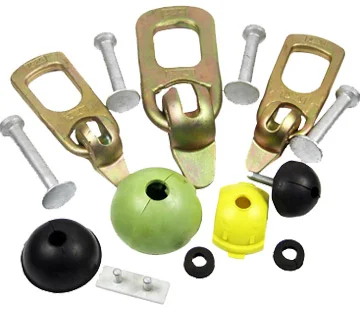
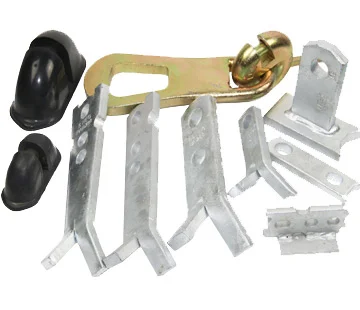

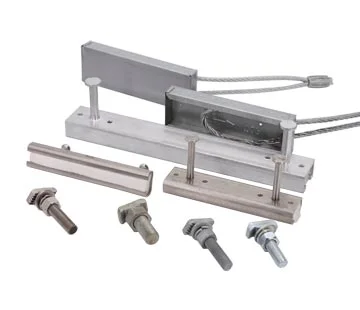

 Guardrail & Handrail Systems
Guardrail & Handrail Systems
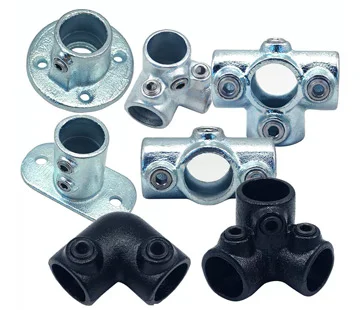

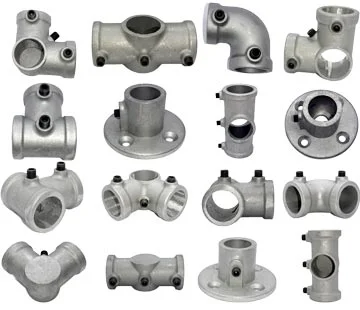
 Metal OEM Parts
Metal OEM Parts
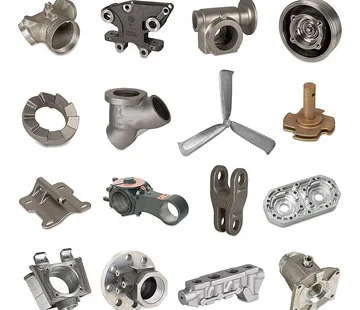
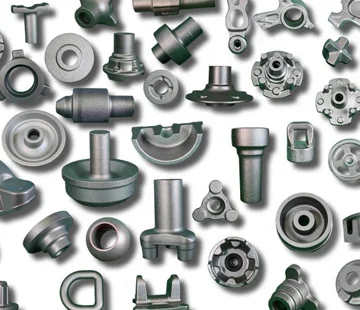
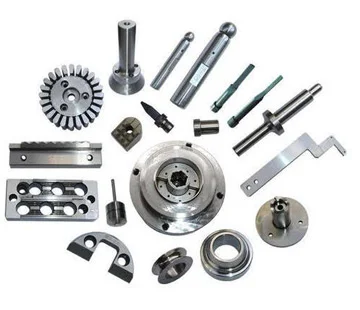
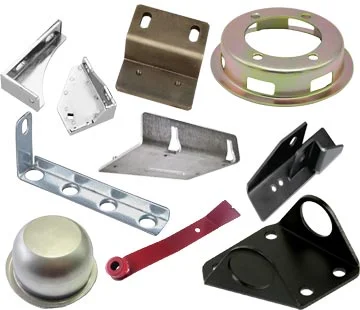
 Network Server Rack Accessories
Network Server Rack Accessories






 Wire Rope Cable Puller Griper
Wire Rope Cable Puller Griper
 Aluminum Parts
Aluminum Parts
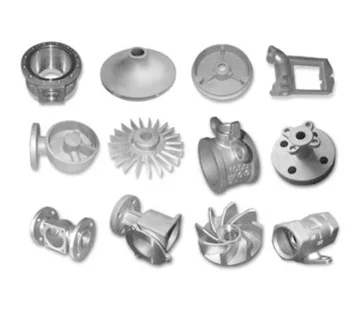
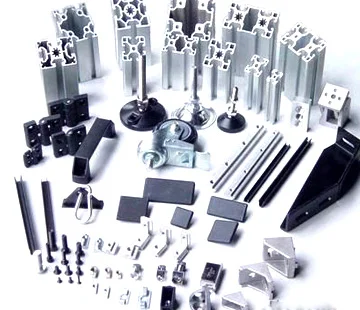
 Pump & Valve Parts
Pump & Valve Parts
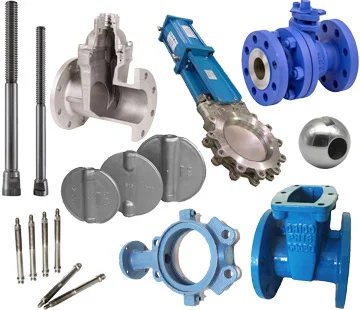
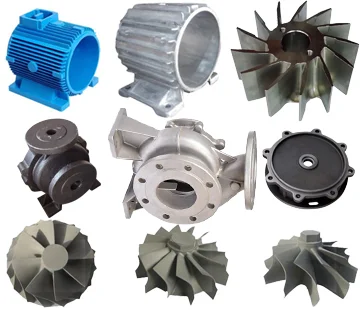









 Metal OEM Parts
Metal OEM Parts 



 Network Server Rack Accessories
Network Server Rack Accessories 





 Wire Rope Cable Puller Griper
Wire Rope Cable Puller Griper 








